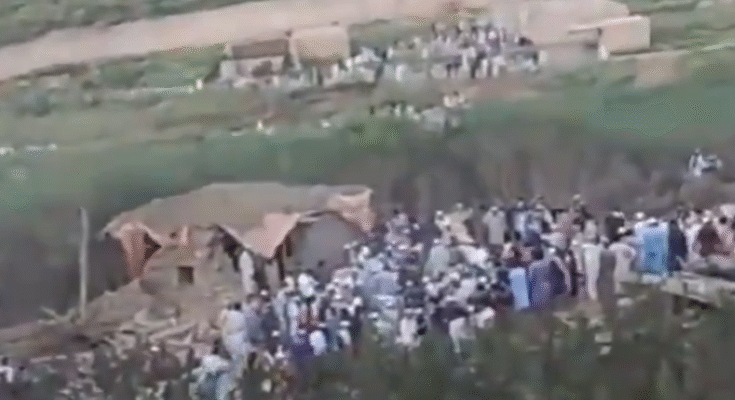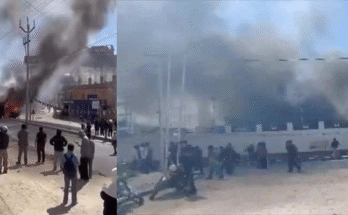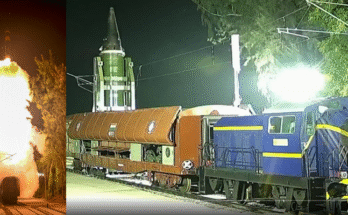Eyewitnesses Blame Pakistan Air Force
JNS: In a night of horror, at least 30 villagers — mostly women and children — were killed after alleged Pakistan Air Force airstrikes flattened homes in Matre Dara, Tirah Valley, early Monday.
According to eyewitnesses, JF-17 fighter jets swooped in around 2 a.m., unleashing a barrage of eight Chinese-made LS-6 precision bombs on the remote settlement. Survivors described entire families being wiped out in seconds.
“Entire families have been erased… the victims were ordinary people with no chance to escape,” a villager told The Tribune.
Viral videos circulating online show a flattened landscape of rubble and burnt-out homes, fueling outrage on social media.
SHAME ON PAKISTAN
30 Pashtun civilians killed after Pak Airforce dropped bombs on its own Tirah village of Tirah valley in KpK
Massive protest starts pic.twitter.com/8k2q32mKxL
— Frontalforce 🇮🇳 (@FrontalForce) September 22, 2025
Pakistan Army’s Counterclaim
The Pakistan Army, however, dismissed reports of an airstrike. In an official statement, military spokespersons blamed the carnage on a terrorist munitions cache that exploded inside a house, triggering the collapse of surrounding homes.
They alleged that “Khawarij terrorists” had hidden explosives in Matre Dara, which detonated accidentally.
Conflicting Narratives
While locals insist the devastation was caused by aerial bombardment, the army’s denial has deepened mistrust in a region already scarred by decades of conflict. International observers say the truth may only emerge if independent investigations are allowed.
LS-6 (LeiShi) — China’s bolt-on precision kit.
Built by Luoyang Electro-Optics (an arm of CASC), the LS-6 converts ordinary “dumb” bombs into guided glide munitions — think of it as a guidance-and-wing kit that turns iron into accuracy.
How it works:
A two-module system (guidance + gliding kit) clips onto conventional warheads (commonly 50 kg, 100 kg, 500 kg and 550 kg). Fold-out wings and cruciform tail surfaces give lift and steerability; an INS works with satellite (BeiDou/GPS) or laser inputs for mid-course and terminal guidance. Some variants add laser, electro-optical or imaging-infrared seekers for finer terminal accuracy.
Performance snapshot:
-
Release altitude and aircraft speed set range — commonly reported in the tens of kilometres (typical figures cited around 40–60 km depending on release profile).
-
Accuracy varies by variant and seeker: from tens of metres down to much tighter terminal hits when laser/EO/IR guidance is fitted.
-
Lightweight, foldable design lets smaller stealth fighters carry smaller LS variants internally.
Why it matters:
The LS-6 is a low-cost way to gain long-standoff precision without buying whole new smart bombs. It extends aircraft reach, reduces exposure to air defences and lets planners mix warhead sizes for different targets — an affordable precision multiplier for any air arm that adopts it.




